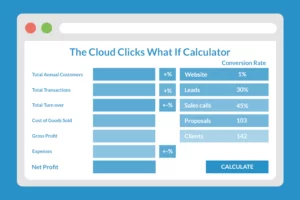As a small business owner, implementing 10 social media advertising strategies to boost sales is crucial for growth and success in today’s digital landscape. A solid social media marketing strategy not only increases brand awareness but also fosters customer engagement and drives revenue. Identifying your target audience is the foundation of an effective social media marketing plan, and this blog post will explain how to do so.
We’ll begin by discussing the importance of identifying your target audience through analyzing existing customers, researching competitors’ customers, and creating buyer personas. Next, we’ll explore setting goals and objectives for your social media strategy while measuring success with key performance indicators (KPIs) and adjusting strategies as needed.
Furthermore, we will guide you on choosing the right social media platforms for advertising by evaluating popular social networks and understanding different ad formats available on each platform.
Finally, learn how to craft engaging ads with compelling copywriting skills alongside visual elements that enhance content effectiveness – all while optimizing social media campaign performance through tracking metrics in real-time.
1. Identifying Your Target Audience

To boost sales for your small business through social media marketing, it is crucial to first identify the best target audience for your social media campaigns. This involves understanding your existing customer base, researching your competitors’ customers, and creating buyer personas.
You can get a better understanding of who your social audience is by using data from social networks or a third-party social media tool .
Analyzing Your Existing Customer Base
Start by analyzing the demographics, interests, and behaviors of your current customers. This will help you understand who is already interested in purchasing from you and can provide valuable insights into potential new audiences to target with social media ads.
You can use tools like Google Analytics or native analytics features on platforms such as Facebook Insights to gather this information.
Researching Your Competitors Customers
In addition to studying your own customer base, it’s important to research the types of people that are engaging with businesses similar to yours on social media platforms. By identifying trends among their followers and engagement patterns, you may discover untapped market segments that could be receptive to your products or services.
Tools like SimilarWeb, SpyFu, or even simply browsing through competitor profiles can help uncover these insights.
Creating Buyer Personas
The next step in identifying a suitable target audience is developing detailed buyer personas based on both existing customer data and competitor analysis findings. A buyer persona represents a fictionalized version of an ideal customer type within a specific segment of interest.
Demographics: Age range, gender, location, income level, and education.
Interests: Hobbies, preferences, lifestyle choices, and values.
Behavior Patterns: Purchasing habits, online activity, and social media usage.
By creating these buyer personas, you can better understand the needs of your target audience and tailor your social media marketing strategies to effectively reach them. This will ultimately help boost sales for your small business through targeted messaging that resonates with potential customers on a personal level.
Identifying the desired demographic for your promotional efforts is a critical component of successful social media marketing, as it helps to guarantee that the relevant individuals are being exposed to your communication. Setting goals and objectives will help you track progress towards achieving those targets and make necessary adjustments along the way.
2. Setting Goals and Objectives for your social media strategy
To ensure successful social media marketing campaigns, it is essential to create clear goals and objectives that can be measured by key performance indicators (KPIs) for adjusting strategies accordingly. By setting specific targets, you can measure your campaign’s performance using key performance indicators (KPIs) and adjust strategies as needed to maximize results.

Defining Your Goals and Objectives
Start by identifying what you want to achieve with your social media marketing efforts. Common goals for small businesses include increasing brand awareness, driving website traffic, generating leads or sales, and boosting customer engagement.
Once you have a clear understanding of your desired outcomes, set SMART (Specific, Measurable, Achievable, Relevant, Time-bound) objectives that align with these goals. For example:
Increase website traffic by 20% within three months through targeted Facebook ads.
Generate at least 50 new leads per month via LinkedIn sponsored content targeting industry professionals.
Have a positive social media presence to increase brand awareness.
Measuring Success with KPIs
Determining the right KPIs for each objective will help you track progress towards achieving them effectively. Some metrics regularly employed in social media marketing are CTR, CPC, conversion rate, ROAS and interaction indicators like likes or shares. Learn more about selecting appropriate KPIs here.
Adjusting Strategies as Needed
Analyzing data from ongoing campaigns allows you to identify areas where improvements are necessary so that adjustments can be made promptly. This may involve refining target audiences based on demographic insights gathered during the campaign, testing different ad formats or creative elements, and optimizing budgets to allocate resources more effectively.
Regularly reviewing your KPIs and making data-driven decisions will ensure that your social media marketing campaigns continue to drive results for your small business.
Setting goals and objectives is essential for any successful digital marketing campaign, as it provides a clear roadmap to success. Identifying the proper outlets for your advertising efforts is just as essential to achieving desired outcomes; let’s take a look at how you can pick the optimal social media channel for your business objectives.
3. Choosing the Right Platforms for social media marketing
After you define your goals, choose the platforms you’ll use, and develop your brand voice, it’s time to start creating and posting content. To boost sales and increase brand visibility, it’s essential to select the most suitable social media platforms for your advertising campaigns.
Assessing the different social media networks comprehending the varied advertisement styles on each one, and picking out those that best match your company’s requirements are all necessary to ensure success with marketing campaigns.

Evaluating Popular Social Media Platforms
Each social media platform has its unique features and user demographics that can impact your advertising strategy. The average internet user has over 5 social media accounts , which they check almost daily. Here are some of the most popular platforms you can choose from:
Facebook: With over 2.8 billion monthly active users, Facebook users span all age groups, genders, and interests. It is an excellent choice for reaching a broad audience across various age groups and interests. There’s a wide demographic range.
Instagram: Owned by Facebook, Instagram boasts more than 1 billion monthly active users. It’s particularly effective visual platform for targeting younger audiences with visually appealing content.
TikTok: As one of the fastest-growing apps globally, TikTok offers businesses access to a predominantly young audience who enjoy short-form video content.
Pinterest: With over 450 million monthly active users, Pinterest is ideal for businesses in industries like fashion, home décor, or DIY projects due to its highly visual nature and search functionality.
LinkedIn: If you’re looking to reach professionals or B2B customers, LinkedIn’s 774 million users provide a valuable opportunity for targeted advertising.
Twitter: A social media platform where users can post short clips of videos, photos, and messages. Twitter users feel more positive about a business when they get a response to their tweet.
Understanding the Different Ad Formats Available on Each Platform
Different social media platforms offer various ad formats to suit your campaign objectives. Some common ad formats include:
Image ads: Static images with accompanying text, suitable for most platforms like Facebook, Instagram, and Pinterest.
Video ads: Short video clips that can be used across multiple platforms such as Facebook, Instagram, TikTok, and LinkedIn.
Carousel ads: A series of images or videos displayed in a scrollable format. These are available on Facebook and Instagram.
Sponsored content: Promoted posts or articles that appear within users’ feeds. This format is commonly used on LinkedIn and sometimes referred to as “boosted” posts on other platforms like Facebook.
Selecting the Best Platforms for Your Business Needs
To choose the best platform(s) for your small business advertising needs, consider factors such as your target buyer’s demographics (age range), interests (niche markets), budget constraints (ad costs per platform), desired ad formats (video vs image-based), and overall marketing goals (brand awareness vs direct sales).
By carefully evaluating these factors alongside each platform’s unique features and user base, you’ll be better equipped to effectively make informed decisions about where to invest your advertising dollars.
Selecting the proper platforms or social media management software for promotion is an essential factor in guaranteeing your social media efforts are successful. You can use different social channels to reach different audiences or to meet various business goals.
With this knowledge of social media marketing tips, you can now move on to crafting engaging ads and content that will capture the attention of potential customers.
Key Takeaway
This article outlines ten successful social media marketing strategies that small businesses can use to increase their sales. These strategies are intended to aid small business owners in expanding their digital visibility, connecting with potential customers and driving more visits to their sites.
For those looking to increase their online presence ,generate leads and drive more traffic to their website, this article offers a great set of strategies for leveraging social media marketing.
4. Crafting Engaging Ads and Content
This section will discuss how to write compelling copy, utilize visual elements effectively, and test different variations of ads and content to optimize engagement with potential customers.

Writing Compelling Copy for Ads and Content
The first step in crafting engaging advertisements is writing captivating copy that resonates with your target audience. A well-written ad should be concise, informative, persuasive, and tailored to the platform on which it appears. To achieve this:
Focus on the benefits: Emphasize what sets your product or service apart from competitors by highlighting its unique features or advantages.
Create a sense of urgency: Encourage users to take action immediately by incorporating phrases like “limited-time offer” or “exclusive deal.”
Use strong calls-to-action (CTAs): Guide users towards taking specific actions such as clicking a link or making a purchase using clear CTAs like “Shop Now” or “Learn More.”
Be consistent in your posts: Consider social media management tools or a social media calendar that helps you organize your media library and schedule your posts in advance.
Utilizing Visual Elements to Enhance Ads and Content
In addition to compelling copywriting, effective use of visual elements can significantly improve user engagement with your ads. According to MDG Advertising, articles containing relevant images receive 94% more views than those without them. To make the most out of visuals in your social media marketing campaigns:
Select high-quality image
Use professional-looking photos that are visually appealing while accurately representing your brand identity. Utilize social media that is specialized in the visual platform, so your posts need to be appealing.
Include videos
Videos can be a powerful tool for storytelling and demonstrating the value of your product or service. Consider creating short, engaging video content to accompany your ads.
Choose a day where you’re going to film all of your reels or shoot all of your photos, and then either publish them over the next week o two, or use a content calendar tool like Buffer or Sprout Social to schedule posts.
Experiment with different formats
Platforms like Instagram and Facebook offer various ad formats such as carousel ads, stories, and canvas ads. Test these options to determine which format works best for your business.
Ensure that you’re creating content that appeals to your target market. You can get your content and offers in front of a huge audience at a very low cost if you choose the right platform boost your social media presence.
Sharing quality content across your social channels is key to engage your audience and attract new followers which will eventually, drive traffic and convert into your consumers.
Testing Different Variations of Ads and Content
To maximize engagement with potential customers, it’s crucial to continually test different variations of your social media advertisements. This process is known as A/B testing or split testing, where you compare two versions of an ad (version A and version B) to see which one performs better in terms of clicks, conversions, or other desired outcomes:
Create multiple versions: Develop several variations of each advertisement by altering elements such as headlines, images/videos/animations used within the ad itself.
Provides a comprehensive guide on how to effectively perform A/B tests on Facebook Ads.
By following these strategies when crafting engaging ads and content for your small business’s social media marketing campaigns, you’ll be well-equipped to capture the attention of potential customers while driving sales growth.
Constructing alluring advertisements and content is essential for successful social media marketing efforts, as it helps guarantee that your intended audience will be captivated by what you have to offer. Moving on, optimizing campaigns for maximum performance involves tracking performance metrics in real-time and refining target audiences based on results.
5. Optimizing Campaigns for Maximum Performance
To ensure the success of your social media marketing efforts, it’s crucial to optimize campaigns continuously for maximum performance. This involves tracking performance metrics in real-time, refining target audiences based on results, and A/B testing ads to improve their effectiveness.

Tracking Performance Metrics in Real Time
Monitoring your campaign’s progress is essential to identify areas that need improvement and make data-driven decisions. Social media management platforms like HootSuite and Sprout Social use proprietary technology to help more experienced social media marketers streamline their processes and get advanced analytics.
Use each platform’s analytics to identify which posts generate the most engagement, whether you’re getting more followers , and to see your audience demographics. There are also tools that help track engagement and conversion metrics for you, such as Google Analytics.
Analytics tools like Google Analytics, Facebook Insights, or platform-specific dashboards to track key performance indicators (KPIs) such as click-through rates (CTR), conversion rates, cost per acquisition (CPA), and return on ad spend (ROAS). By analyzing the KPIs, you can identify which tactics are successful and need refinement.
Track and Measure Your Social Media Goals to see its efficacy. Use social media tools that will help you track and analyze the results. Use these data to improve your own strategy.
Refining Target Audiences Based on Results
An effective targeting strategy is critical for reaching potential customers who are most likely to convert. As you gather data from your campaigns, analyze the demographics, interests, behaviors, and preferences of users who engage with your ads.
Then refine your targeting parameters accordingly by narrowing down or expanding audience segments based on these insights. This approach ensures that you’re always focusing resources on high-potential prospects while minimizing wasted ad spend.
Tips for Refining Your Target Audience:
Create lookalike audiences: Leverage platforms like Facebook Ads Manager to create a lookalike audience similar to those who have already converted through previous campaigns.
Utilize retargeting: Reach out again to people who have previously engaged with your brand or visited your website by implementing retargeting strategies.
Segment audiences: Break down your target audience into smaller segments based on specific attributes, such as age, gender, location, interests, and behaviors. This will allow you to create more personalized ad experiences for each group.
A/B Testing Ads to Improve Performance
To optimize the effectiveness of your ads further and boost engagement rates, conduct A/B testing (also known as split testing) regularly. By creating multiple variations of an ad with different headlines, images, copy elements or calls-to-action (CTAs), you can determine which version resonates best with your target audience.
Analyze the performance data from these tests and implement winning elements in future campaigns for continuous improvement.
Best Practices for A/B Testing:
Test one variable at a time: Focus on changing only one element per test so that you can accurately attribute any differences in performance to that specific change.
Use statistically significant sample sizes: Ensure that enough people see both versions of the ad before drawing conclusions about its effectiveness. This helps avoid making decisions based on random chance rather than actual trends.
Analyze results objectively: Look beyond surface-level metrics like CTRs and consider factors such as conversions and ROAS when evaluating the success of an A/B test variation.
Incorporating these optimization techniques into your social media marketing strategy will help maximize campaign performance while boosting sales for small businesses like yours. Stay agile in adjusting tactics based on real-time insights and continuously strive towards improving overall marketing efforts through data-driven decision-making processes.
FAQS
Conclusion
By implementing the 10 social media marketing strategies to boost sales for small businesses, business owners can effectively reach their target audience and increase their customer base. In order to maximize returns and get the most out of their campaigns, business owners should closely monitor the performance of their social media marketing strategies.
With a well-planned strategy, businesses can leverage digital marketing tactics on social media platforms and achieve success with improved visibility and higher sales figures.
Take your small business to the next level with these 10 social media marketing strategies! Make sure you’re optimizing your sales and growing your customer base by implementing a successful digital marketing plan.Get your social media strategy and planning templates at CloudClicks. Contact us today.







